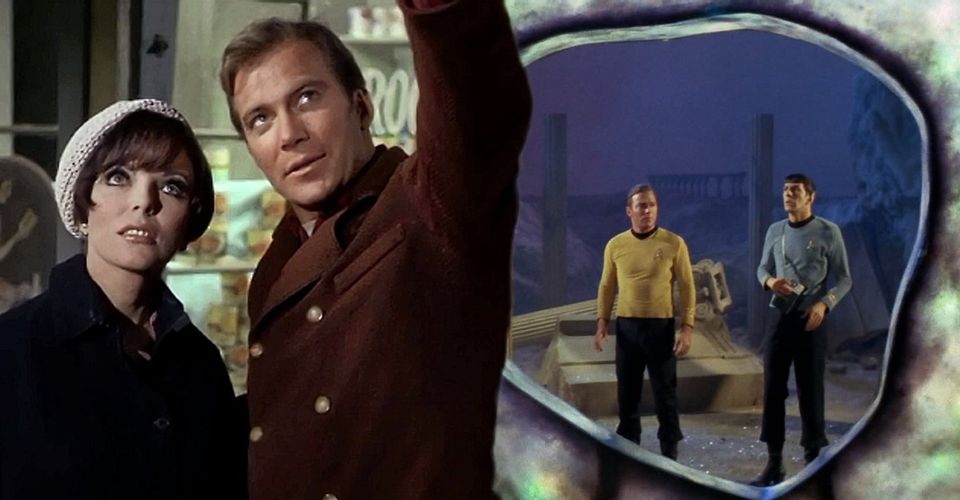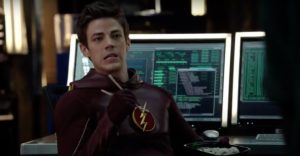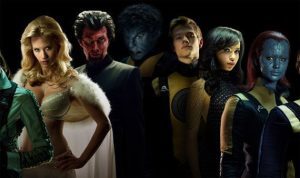Why The Best Star Trek: TOS Episode Is Also The Most Controversial

Despite being one of the episodes that made Star Trek, “The City on the Edge of Forever” has endured controversy spanning decades. Watching Star Trek: The Original Series, it’s easy to assume everyone involved was having a great time. As he dropkicks a Gorn and kisses the nearest female, William Shatner looks like he doesn’t have a care in the world. But as has since been revealed, Star Trek: TOS was rife with production issues, cancellation threats, and behind-the-scenes feuds.
Despite the turmoil, Star Trek was still able to produce iron-clad classics such as season 1’s “The City on the Edge of Forever.” A sci-fi story in the time travel mold, a hopped-up McCoy meddles with time and erases the Enterprise from existence. Kirk and Spock follow him to 1930s New York to set things right, but the captain falls in love (obviously) with Joan Collins’ Edith Keeler. In a cruel twist of fate, Edith’s death is the key to fixing time, and Kirk must make the heartbreaking decision to let history play out as intended. Beloved by fans and critics alike, “The City on the Edge of Forever” scooped up several prestigious awards (including a Hugo) and is still held up as a Star Trek benchmark.
Despite the episode’s popularity, it caused a surprising amount of trouble. Upon airing, “The City on the Edge of Forever” was credited to acclaimed writer Harlan Ellison. By his own admission, Ellison was not always easy to work with, and didn’t appreciate being lumped into the “science fiction” bracket. Nevertheless, the writer found himself hired by Star Trek creator Gene Roddenberry. Ellison pitched and submitted “The City on the Edge of Forever” and Roddenberry, along with fellow producer Gene L. Coon, liked what they read, but required rewrites – firstly to bring the story in line with Star Trek‘s continuity, and secondly to accommodate the show’s modest budget. Roddenberry estimated the episode as written would’ve tripled expenditure. What followed was months of back-and-forth, with Ellison asked to make changes but never quite fulfilling the requests. Eventually, the episode was rewritten one final time by Coon and D.C. Fontana, supposedly with Roddenberry’s involvement.

Ellison began writing before the Star Trek premise was properly established. So while the writer reportedly wanted drug-dealing crew, an execution, and Kirk making derogatory remarks against Vulcans, Roddenberry had since settled on a more utopian vision. The filmed episode made Ellison’s ambitious time travel effects and 9-foot giants more budget-friendly, changed the cause of McCoy’s frenzy to a medical mishap (after Bones replaced another character during one of the many rewrites), softened the crew’s personalities, and altered the original ending where Kirk couldn’t bring himself to let Edith die. Needless to say, Ellison hated the rewrites, condemning the filmed episode as a diluted, “sold out” version of his original.
Gene Roddenberry denied Harlan Ellison’s request to have his name removed from the episode, since Star Trek needed the boost from working with such an acclaimed writer, and this incensed Ellison further. The writer publicly condemned his experience on Star Trek, and famously accepted an award for his original draft by dedicating it to the memory of his ditched story. Ellison also sold copies of his “The City on the Edge of Forever,” and wrote a book about the entire ordeal. Roddenberry and others fired back with ugly stories from working with Ellison and the impractical nature of his first draft, before the writer finally sued CBS for unpaid income in 2009. The two parties came to an agreement, but the feud itself was never truly settled.
At the heart of “The City on the Edge of Forever” is the moral dilemma Kirk, Spock and McCoy face between saving an innocent person, and safeguarding the future as they know it. Watching the trio’s personalities adapt to a more familiar, non-futuristic setting makes them far more relatable, and these elements are retained from Harlan Ellison’s initial idea. General consensus (even among the Star Trek producers he antagonized) maintains that an authentic adaptation of Ellison’s script would’ve been even better, were it feasible. But the episode’s enduring popularity proves that Roddenberry, Coon and Fontana successfully distilled the key ingredients into something Star Trek could work with – even if Ellison was left betrayed.
About The Author


















